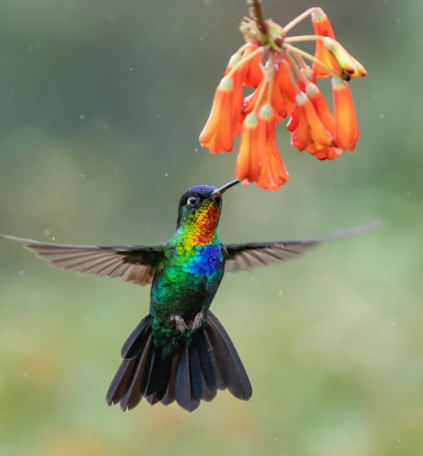By Sophia Byl
In our current industrialized world, where large buildings dominate city skylines and natural landscapes become increasingly populated by humans, neutral colors run rampant. The grays and browns of metal and brick overshadow the more colorful hues of greens, blues, oranges, and the rest of the rainbow as humanity’s ever-expanding touch claims more land for our species. And while it’s true that advertisements in the big cities can provide a nice pop of color, many large companies still tend to forgo pretty colors for functional or uniformity – just look at all of Google’s product logos today versus a couple years ago. A loss of color equates with loss of unique charm, and ultimately, loss of personality.
When we look at the animal kingdom, on the other hand, we see its fate is drastically different. Sure, lots of animals have brown and black fur, but that’s how they’ve evolved to survive in their ecological niches. Neutral colors in human society aren’t a survival skill – they’re a seemingly unavoidable consequence of industrialization and gentrification. Colors are rarely celebrated on a large scale for us, save for festivals like Holi, events like the Northern Lights, with its stunning gradient of greens and blues, and of course, Pride month, where combinations of every color make up the wide diversity of flags we celebrate not just this month, but every month.
In nature, bright colors serve a beautiful variety of functions, but the primary two are finding a mate and signalling danger to potential predators. Well-known examples of species with colorful males yet drab females include peacocks, mallard ducks, and birds of paradise – mainly birds. Typically, the male with the most vibrant coloring and/or patterning is most likely to win the heart of a potential mate. Thanks to natural selection and evolution, males with less striking colors tend not to pass on their genes, leading to successive generations of birds getting ever brighter thanks to the success of their colorful fathers.
As for animals that use color as a warning (a technique known as aposematism), they are ubiquitous across the animal kingdom. From fish to insects to snakes to even other mammals, a huge number of species take advantage of colors all across the rainbow to signal to anyone who might want to eat them that they taste bad, may be cumbersome to eat, or may even be deadly if ingested. For humans, it’s important to have a rainbow on your plate of fruits and veggies so you get all your necessary nutrients, but for a creature like a hawk or shark, eating a rainbow could just land them in an early grave.
But some animals have coloration that doesn’t seem to fit into either of these categories – they’re flashy just because they can be. Take, for example, the brilliantly hued fiery-throated hummingbird, with feathers that shift between reds, yellows and blues surrounded by a vibrant green. It’s not poisonous, and because both males and females are colored the same way, the patterning clearly doesn’t serve as a mating tactic either. Therefore, it’s not exactly clear why these little birds are as iridescent as they are. Other animals that exhibit this phenomenon include certain parasitic wasps (the cuckoo wasp and jewel wasp are two prominent example), the coral reef-protecting parrotfish, and the somewhat famous lilac-breasted roller, an African bird that holds the title of most colorful animal in nature.
Hopefully, humanity can take a couple of lessons from these carefree colorful spirits in nature. You don’t need a reason to make things colorful and bright – do it just because. Maybe we’ll even see some designs popping up reflecting certain creatures in our environment. Would an iridescent green car based on hummingbird feathers be popular? The only way to find out is if we make an effort together to bring more color to our world.

